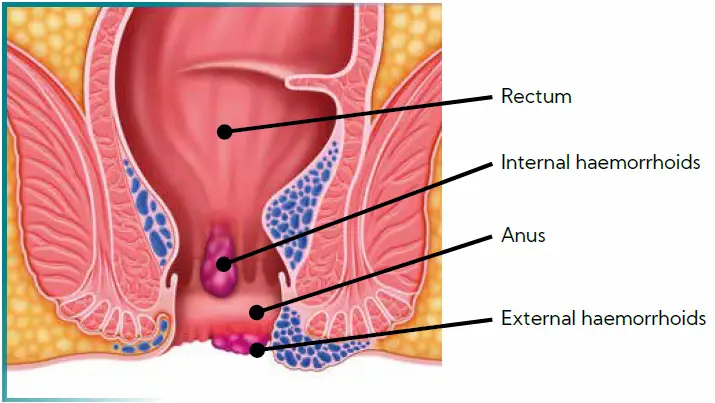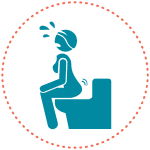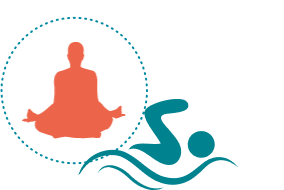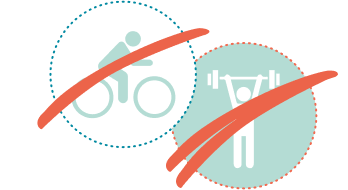First up are haemorrhoids
There are two types of haemorrhoids, namely:1
- External, which form under the skin around the anus
- Internal, which form inside the rectum

Feeling uncomfortable?
External haemorrhoids can cause itching or irritation in your anal region as well as pain, discomfort and bleeding. You may also experience swelling around your anus.1

You can’t see internal haemorrhoids and they rarely cause discomfort but straining or irritations when passing stool can lead to painless bleeding during bowel movements. You might notice bright red blood on your toilet paper or in the toilet. A haemorrhoid that pushes through the anal opening, is called a prolapsed haemorrhoid and can cause pain and irritation.1
There is a third type of haemorrhoid called thrombosed haemorrhoids. This is when the blood in an external haemorrhoid forms a clot (thrombus). It can cause severe pain, swelling, inflammation and a hard lump near your anus.1
Let’s get moving and shaking

One of the major risk factors for developing haemorrhoids is a lack of exercise.2 The chances that you could develop haemorrhoids are directly correlated to the amount of exercise you get.1
Healthy physical activity is important as it improves blood circulation, which transports vital nutrients to different parts of the body, including the anus 2 These nutrients make the rectal blood vessels and veins stronger, which reduces inflammation in the anal region.2 Pressure on veins is usually accumulated during long periods of standing or sitting. Staying active reduces this pressure.2
Being physically active also helps in the effective and fast treatment of haemorrhoids.2
There are two types of haemorrhoids, namely:1
- External, which form under the skin around the anus
- Internal, which form inside the rectum
Exercises that can do the trick
Exercises that improve muscle tone are very helpful in preventing haemorrhoids. These exercises include swimming, running, walking, aerobics and yoga.2,3

Sphincter exercise is another physical activity to help prevent the development of haemorrhoids.2 Practice the Kegel exercise several times each day and very slowly. It will gradually lift the sphincter muscle, thus remedy your haemorrhoids.2
- Stand erect
- Gradually rise on the toes
- At the same time, raising the hands slowly from the side
- Extend arms until they are high above the head
- Then bend forward as if trying to touch the floor with fingertips

Exercise such as biking should be avoided as it puts pressure around the anal region thus worsening and predisposing you to the development of haemorrhoids. Weightlifting is also not recommended, as it puts strain on the lower back, which can worsen haemorrhoids.2
Don’t give up on exercise if you have haemorrhoids but do choose the right exercise routine.
Moderate exercise of minutes
per week will do the trick.3
You can also speak to a trainer or a healthcare professional to help you with the right routine and exercise that’s good for you.


